Thrive Market’s Startup Distribution Network
How does a fastgrowing, e-commerce startup company build out order fulfillment capabilities? Thrive Market answered that question with its new facility in Indiana.
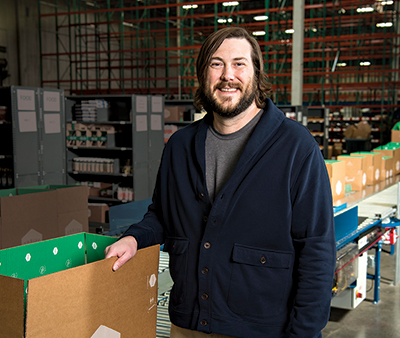
How does a fast-growing, e-commerce startup company build out order fulfillment capabilities? Thrive Market answered that question with its new facility in Indiana.
The typical facility in Modern Materials Handling was put up by a large, brand-name company doing hundreds of millions—if not billions—of dollars in sales each year from that location. But there’s another category of facility out there, designed by rapidly growing startups that are bulging at the seams. In these facilities, orders are filled using rudimentary processes and equipment from Staples. This is especially the case for young e-commerce companies faced with the decision to outsource fulfillment to a third-party logistics (3PL) provider or go all in on their own distribution network. That was the dilemma confronting Thrive Market, a membership-based online platform focused on making healthy living easy and affordable. Launched at the end of 2014, Thrive Market now has more than 400,000 members who pay $60 a year.
As recently as 2015, orders were being picked by hand from pallets stored on shelves in a 12,000-square-foot building in Los Angeles. With sales growing at 25% to 50% per month, Thrive Market made the decision to forgo the 3PL route, hire experienced supply chain executives, and build out its own distribution network, starting with a 361,000-square-foot facility in Batesville, Ind., near Cincinnati. Working with a system integrator (Swisslog) , Thrive Market designed a building that accomplished at least three goals, according to Matthew Terry, director of fulfillment. 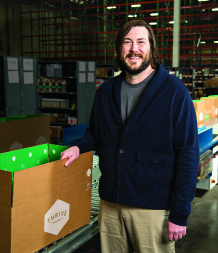
First, using a warehouse management system (WMS), wrist-mounted mobile computers and ring scanners, conveyor and sortation, and automated packaging, launched the company on a journey from completely manual operations to automation.
Second, Thrive Market’s social mission drives every decision. Packaging materials are sustainably sourced; the company’s carbon footprint from a shipping standpoint was a factor in the location selection; and Thrive Market offers full-time employment and benefits to its Thrivers, as associates are known, rather than use temporary labor. “Not only is our core business helping Americans live a healthier lifestyle, we’re trying to choose suppliers and solutions in a sustainable way,” Terry says.
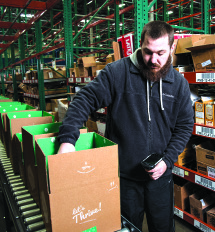 Finally, the solution needed to be scalable to accommodate growth that was projected to continue at up to 100% a year. “We needed to fill orders and start building out for the future all at the same time,” Terry says.
Finally, the solution needed to be scalable to accommodate growth that was projected to continue at up to 100% a year. “We needed to fill orders and start building out for the future all at the same time,” Terry says.
The mission
Thrive Market was the brainchild of Gunnar Lovelace, a California native who grew up on a communal farm where people pooled their resources to purchase the seeds and equipment they needed to grow food. He wondered why a community of people couldn’t pool together their resources to bring down the cost of organic foods, health and wellness. Lovelace attracted three other founding partners—Nick Green, Kate Mulling and Sasha Siddhartha—and the company launched in November 2014.
“The founders were trying to tackle two problems that put American diets and lifestyles out of whack, which were cost and geography,” says Terry, who joined the company from Target in 2015. “Unless you live in a city or urban area with access to a health food store or a farmers’ market, you don’t have access to a lot of wholesome foods. And, the second is the cost: It’s just cheaper to purchase processed rather than wholesome items.”
The company tackled those problems in two ways: Thrive Market is a membership company, like Costco, with a $60 annual membership fee. Membership provides access to natural and organic food products at prices 25% to 50% lower than retail. In addition, for every paid membership, the company donates a free membership to a low-income family, teacher, veteran or student in the United States. Second, as an e-commerce company, Thrive Market addresses the geography issue by shipping products nationally for free. Last, in an effort to keep prices down, it offers a curated, but limited, assortment of about 4,000 SKUs.
“A normal grocery store has 26 ketchups; we carry two brands that meet our values and standards in the best way,” says Terry. What’s more, he adds, Thrive Market organizes selections that meet various dietary and lifestyle needs. “If you’re on a paleo diet, you’re diabetic, or have a child who is gluten free, we do the homework for our members,” he says.
The company resonated with consumers and investors. By 2016, according to reports, Thrive Market had raised $141 million across three rounds of funding. Meanwhile, sales increased 500% from March 2015 through March 2016.
While many might be envious of that kind of growth, filling all those orders creates its own set of problems. Initially, orders were filled out of a 12,000-square-foot space in Los Angeles; the plan was to stay there for two years. It soon became apparent that wasn’t going to work. Plan B was to bring in John Winkels, an experienced supply chain executive from Kroger, to build out a distribution network.
“Most young growing companies would have gone with a 3PL,” says Terry. “Our founders wanted to control the customer experience.” The original goal was to open a long-term distribution facility in 2016. “That timetable was moved up to September 2015,” says Terry, who interviewed with the company over a weekend and started working in Batesville a week and a half later.
Asked what brought him to a startup from one of the country’s best-known retailers, Terry says it was Thrive Market’s mission. “Touring the company, I saw passion, growth and what they were trying to accomplish,” Terry says. “I think John and I were both drawn to the opportunity to build something from the ground up.”
Building out a network
One of Winkels’ first tasks when he came onboard was to pick a location for a long-term distribution facility. “The problem facing all e-commerce companies is where do you ship from,” says Terry. “If you’re only going to have one facility, Los Angeles is probably the worst from time in transit to the customer and our carbon footprint.”
Like many other e-commerce companies, Thrive Market began looking for space within the inverted triangle between Columbus, Louisville and Indianapolis. Located near Cincinnati, the Batesville facility that Terry was hired to setup and run had until recently been used by GE to ship full trailer loads of pallets to big box retailers, but not for piece picking and parcels shipped direct to consumers. “It was a big empty space ready to be filled, and there was a local community with a population that had experience in manufacturing and distribution,” Terry says.
To get started, pallets were stored on the floor; there was limited bin storage for cartons and all picking was manual. Pack stations were created at desks that had been donated by a closed office down the street. In short order, how-ever, a system integrator was on site to offer initial suggestions and begin working on a permanent solution.
“They helped us secure the contractor who put up some of that initial shelving,” Terry says. “And they were literally doing back-of-the-napkin drawings—on a napkin—about where they would put things.”
In addition to the goals outlined earlier, the design was driven by three critical factors:
- They had to get up and running quickly just to keep up with the volume of orders.
- The solution had to be scalable and modular so it could be installed in phases. “We started with four pick modules and the ability to insert two more in the next phase,” says Terry. “That allowed us to continue to operate while the solution was being installed.”
- Terry says. “We needed a system that would allow us to deal with that from an efficiency, quality and safety standpoint.”
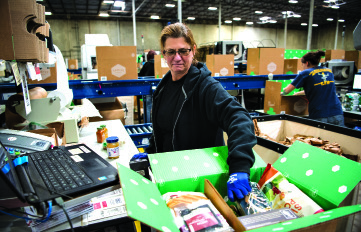
Phased automation
The ultimate design in operation today includes a high-velocity area known as the Fast 50. This is a pallet storage area reserved for the 50 fastest moving SKUs that show up in almost every order. In that area, boxes are created and labeled manually—and while it was not in the original drawing, it was added in the first phase.
Next up was four perpendicular pick modules for mid-velocity SKUs, where associates pick from pallets and case flow rack. In addition, there is a separate bin shelving area for the slowest-moving SKUs.
In the final phase of the facility, which will come later, Thrive Market will add two more pick modules and reconfigure and relocate the bin shelving for a smoother flow through the facility. There are additional plans for a cold storage area; the company does not sell perishables, but it does offer some products that are sensitive to heat.
Work process areas are tied together by a conveyor and sortation system that routes cartons through the various picking areas on a pick-and-pass basis. Once an order is complete, it is conveyed to a packing area, where a lot of effort is expended. “When we first started talking to our systems integrator, they asked us how many containers per minute did we want to get through packing,” says Terry. “We flipped that on its head and asked: Given the customer experience we want to provide through packaging, how many minutes do we need per container.” 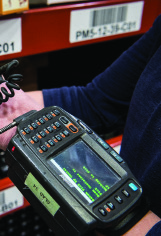
Packages include branded printing on the inside of the box, 100% recyclable packaging and sustainably sourced packaging material and hand-written thank you notes, to name a few touches.
The facility also takes a different approach to software. The WMS system is a true management system in this facility, managing inventory control, communication with the host order management system and order batching. A ware-house execution system (WES) receives a batch of orders from the WMS and orchestrates the flow of goods through the facility.
Terry says the facility hit on all of its goals. Thanks to its location and automation, it improved Thrive Market’s carbon footprint, increased capacity and reduced time in transit on orders. “We can move more product than we could with a manual process and do it efficiently and safely,” he says.
But the fast-growing e-commerce company is not done. Last June, it took over a 350,000-square-foot e-commerce facility in Sparks, Nev., to serve the west and northwest United States. “Our growth means that we had to move faster than we anticipated,” Terry says. “We believe we now have the capacity to meet our projected growth over the next two years.”
Thriving with automation
Of the many changes that occurred in the first two phases of operation, perhaps the biggest was the transition from conventional warehouse processes to automation. In a company that values its “Thrivers,” that required careful planning. Culture, for instance, is introduced at orientation, reinforced in meetings and taught during training.
“Talk to anyone in distribution, and they’ll tell you that change is the reason leaders exist,” says Matthew Terry, director of fulfillment. “Our first year was like one big Kaizen event, in that we changed processes about five times, and each time we’d scrap what we had been doing before to do something different.”
The biggest change from manual to automation was how the building was staffed. “In a manual operation, the question is how many people do you throw at a problem,” Terry says. “With automation, you’re managing your uptime.”
Since the company was growing rapidly, employees were not replaced by automation. Rather, Terry says that the leadership team explained to the Thrivers that they were building staffing levels to meet customer service requirements and right sizing automation to the building. “Once the automation came in, we had a different world from a safety standpoint, and the staff realized that,” he says.
See the complete inner workings of the newly designed Thrive Market distribution center.

Article Topics
Latest in Logistics
LM Podcast Series: Assessing the freight transportation and logistics markets with Tom Nightingale, AFS Logistics Investor expectations continue to influence supply chain decision-making The Next Big Steps in Supply Chain Digitalization Under-21 driver pilot program a bust with fleets as FMCSA seeks changes Diesel back over $4 a gallon; Mideast tensions, other worries cited Four U.S. railroads file challenges against FRA’s two-person crew mandate, says report XPO opens up three new services acquired through auction of Yellow’s properties and assets More LogisticsAbout the Author
Subscribe to Logistics Management Magazine

Find out what the world's most innovative companies are doing to improve productivity in their plants and distribution centers.
Start your FREE subscription today.
April 2023 Logistics Management

Latest Resources














